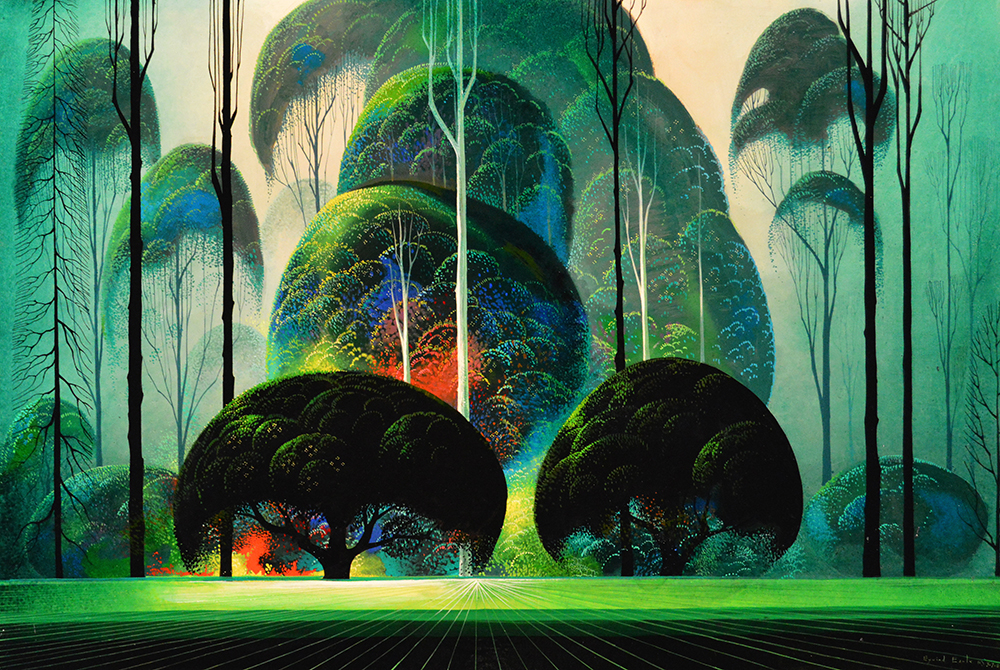Twentieth-century artists who worked on classic Walt Disney feature animations rarely get the attention they deserve. One of them, who was the lead stylist for Sleeping Beauty (1959), is getting his time in the spotlight at this museum.
I’ve come across exhibitions like this before — whether in person or digitally — and they always make an impression, leading to the question: Why aren’t there more institutions celebrating these fantastic artworks? I’m talking about original artworks from the animation studios of our childhood, such as Walt Disney, Warner Brothers, MGM, and more.


The Walt Disney Family Museum in San Francisco, California, is an institution made for these types of displays, and its current exhibition “Awaking Beauty: The Art of Eyvind Earle” surely deserves your attention. On view from May 18 through January 2018, “Awaking Beauty” is a gorgeous retrospective that showcases the life and work of Eyvind Earle (1916-2000), who is best known as the lead stylist for Sleeping Beauty (1959). Earle was also a lead stylist for concept art that intimately shaped such films as Lady and the Tramp (1955) and Peter Pan (1953).



Via the museum, “Co-curated by Ioan Szasz, CEO of Eyvind Earle Publishing, and Michael Labrie, Director of Collections and Exhibitions for the Walt Disney Family Foundation and The Walt Disney Family Museum, the artist’s first-ever comprehensive museum retrospective will feature more than 250 works, including intricate thumbnail concept paintings for Lady and the Tramp and evocative large-scale concept artworks for Sleeping Beauty. Alongside Earle’s work for The Walt Disney Studios is an extensive showcase of his fine art, including elaborate and lush landscapes, unique scratchboards, rare examples of sculpture, companion poetry, and commercial illustrations. In addition to signature landscapes and enchanting illustrations that are characteristic of Earle’s style, the exhibition will feature his limited-edition serigraphs and lesser-known pieces, including cartoon drawings from his time in the U.S. Navy and commercial advertisements for American brands.



“This retrospective offers unique insight into Earle’s colorful life story, his inspiration, and his creative approach to the art-making process. Combined, these elements fueled an extraordinarily diverse career across a spectrum of traditional fine art, commercial design, and filmmaking.”
To learn more, visit The Walt Disney Family Museum.
This article was featured in Fine Art Today, a weekly e-newsletter from Fine Art Connoisseur magazine. To start receiving Fine Art Today for free, click here.








